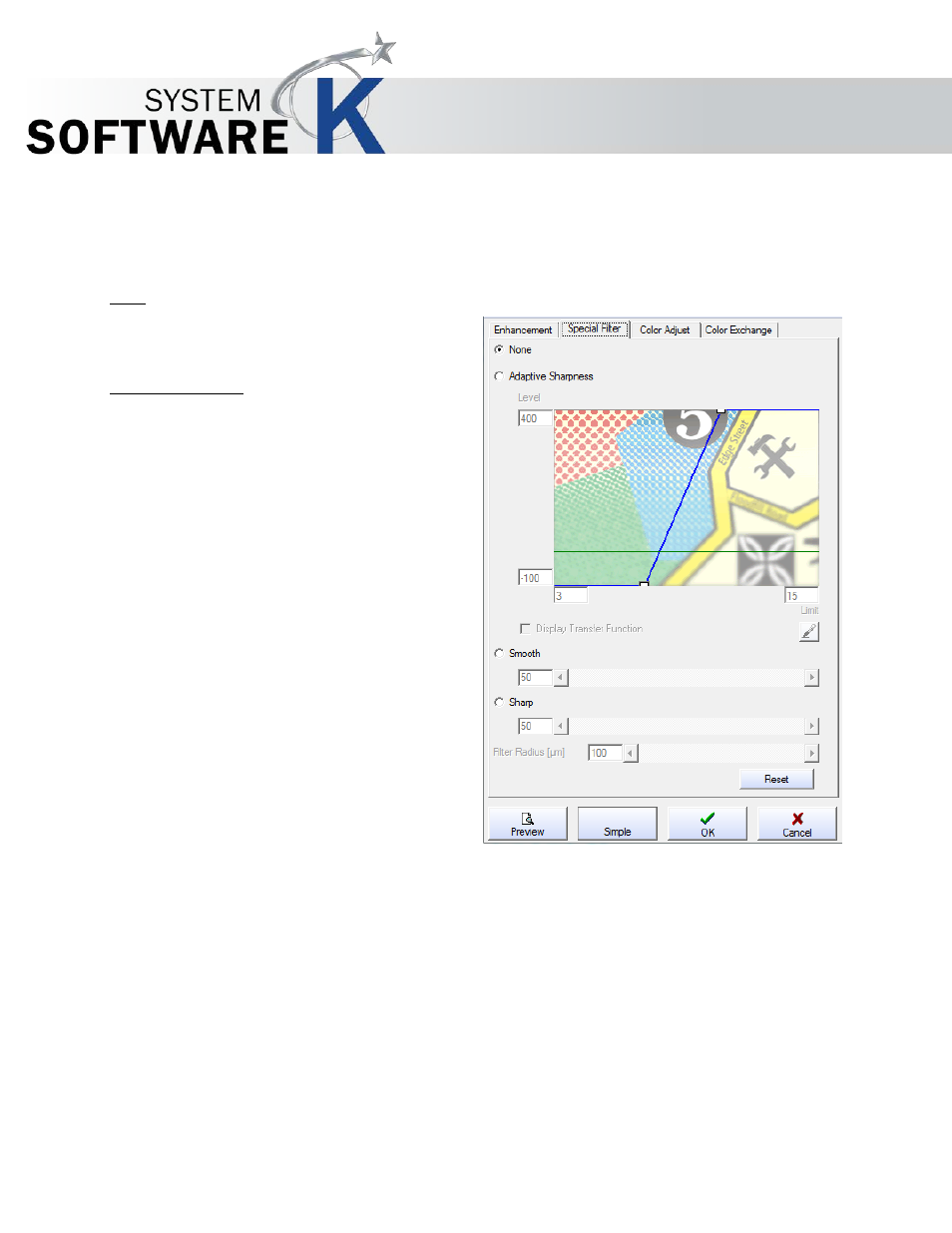None, Adaptive sharpness, Level – KIP Graphics Pro User Manual
Page 84: Limit, Display transfer function, Pecial, Ilter, Odes, Except, Lack

KIP Graphics Pro
No part of this publication may be copied, reproduced or distributed in any form without express written permission
from KIP. 2015 KIP. v1.
- 84 -
Tab Special Filter (All Modes except Black & White Mode)
This tab offers several methods to change the level of sharpness of the whole image or of specific elements of the image.
None
If
N
O N E
is selected, no special filter is in use.
Adaptive Sharpness
This option reduces print raster.
By combining the smoothening and sharpening filters,
A
D A P T I V E
S
H A R P N E S S
softens the image sections with
constant colors in order to make raster virtually invisible.
Object edges and text remain sharp and can even be
sharpened.
You can enter values for the
L
E V E L
and
L
I M I T
directly in
the
entry fields or move the white squares corresponding to
the
“coordinates” of the filters in the diagram.
Level
You can set the level, or intensity, of the sharpening and
softening filters individually. Picture sections with poor
contrast or image backgrounds are edited with the lower
entry
field, whereas the highly contrasted sections, such as
text
and edges, are edited with the upper field.
0: max. smoothing
100: max. sharpening
Default value: 0 - 100
Limit
You can determine for each filter up to which or from which value they will work. The left entry field works in combination with
the smoothing filter (lower field under
L
E V E L
); the right one with the sharpening filter.
Picture sections whose contrast is under the value set in the left field will be smoothened; sections with contrast values greater
than the figure entered in the left field will be sharpened. Pictures sections with contrast values between those of the left and
right fields will be sharpened or softened according to their contrast.
100: max. contrast
Default value: 30 - 50
Display Transfer Function
Activate this check box to check the effects of sharpness and smoothing filters. Areas that have been sharpened are displayed
black; areas appearing white have been smoothed. By using the
D
I S P L A Y
T
R A N S F E R
F
U N C T I O N
option it is easier to find a
